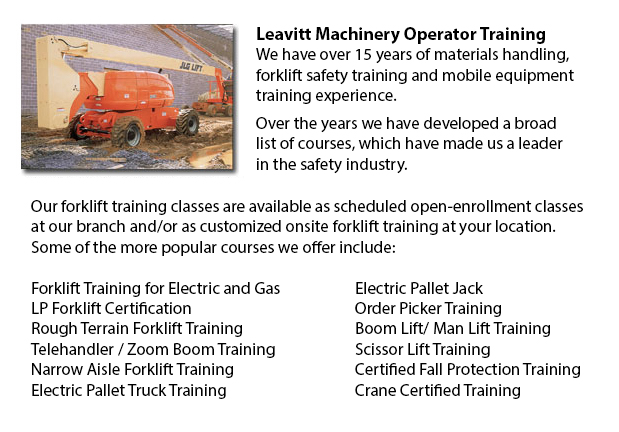
Boom Lift Certification Avondale - Utilizing elevated work platforms allow for work and maintenance operations to be performed at elevated work heights which were otherwise not reachable. Boom Lift Certification Training teaches workers regarding the safe operation of scissor lifts and boom lifts.
When work platforms are not operated safely, they have the potential for serious injury and even death, regardless of their lift style, application or the site conditions. Electrocution, falls, tip-overs and crushed body parts could be the tragic outcome of incorrect operating procedures.
To avoid aerial lift accidents, individuals need to be qualified in order to train workers in the operation of the particular type of aerial lift they would be using. Controls should be easily accessible beside or in the platform of boom lifts made use of for carrying workers. Aerial lifts must not be be modified without the express permission of the manufacturer or other recognized entity. If you are renting a lift, ensure that it is maintained properly. Before using, safety devices and controls should be checked to be able to make sure they are correctly functioning.
Operational safety procedures are essential in avoiding incidents. Operators should not drive an aerial lift with an extended lift (even though a few are designed to be driven with an extended lift). Set outriggers, if available. Always set brakes. Avoid slopes, but when needed use wheel chocks on slopes which do not go over the slope limits of the manufacturer. Follow load and weight limitations of the manufacturer. When standing on the boom lift's platform, utilize full-body harnesses or a safety belt with a two-foot lanyard tied to the basket or boom. Fall protection is not necessary for scissor lifts which have guardrails. Never sit or climb on guardrails.
The boom lift certification course provides instruction in the following areas: safety tips to be able to prevent a tip-over; training and certification; inspecting the work area and travel path; slopes and surface conditions; other guidelines for maintaining stability; stability factors; weight capacity; leverage; testing control functions; pre-operational check; safe operating practices; mounting a vehicle; safe driving procedures; power lines and overhead obstacles; PPE and fall protection; making use of lanyards and harness; and avoid falling from the platform.
The successful trainee will become familiar with the following: pre-operational inspection procedures; training and authorization procedures; how to avoid tip-overs; factors affecting the stability of boom and scissor lifts; how to use PPE, how to use the testing control functions and strategies to avoid falls.
-
Forklift Certification Courses Avondale
Forklift Certification Courses Avondale - Forklift certification courses really help to be able to make sure that companies using forklifts, follow the local and regional rules. The drivers of the forklift need to go through forklift certification pr... More -
Manlift Certification Avondale
Manlift Certification Avondale - The Elevated Platforms and Manlifts Certification course helps to provide the required training on the work practices, safe operating procedures, rules and regulations regarding the daily activities for the operators... More -
Manlift Operator Training Avondale
Manlift Operator Training Avondale - The aerial lift or manlift is a specialized type of hydraulic platform that is intended to hoist a person vertically giving it an alternate name of a vertical personnel lift. These machinery are widely used for a... More -
Telescopic Training Avondale
Telescopic Training Avondale - Telescopic Handlers are a type of forklift, normally called telehandlers. This machine has been increasing in popularity because of its greater lift heights and its versatility. It is often preferred over the convention... More -
Heavy Equipment Training Avondale
Heavy Equipment Training Avondale - The two most common types of heavy equipment training are classed into the categories of equipment; equipment that is fashioned with rubber tires or those with tracks. The tracked vehicle are heavy duty equipment l... More -
Aerial Lift Train the Trainer Avondale
Aerial Lift Train the Trainer Avondale - The Aerial Lifts Train the Trainer Certification Program would teach trainers how to efficiently train operators in safe industrial mobile equipment operation. Trainers are provided with in-depth instruction a... More -
Overhead Crane Safety Training Avondale
Overhead Crane Safety Training Avondale - The overhead crane safety training program is meant to equip the operators with the right knowledge and skills in the areas of: crane safety measures, accident avoidance, materials handling, and stock and equ... More -
Heavy Equipment Training Schools Avondale
Heavy Equipment Training Schools Avondale - When choosing an operator training course, there are numerous heavy equipment training schools to select from. In order to ascertain the qualifications you would attain, it is very important to check some a... More

Forklift Training Avondale
TOLL FREE: 1-888-254-6157
Avondale, Arizona
forkliftcertificationavondale.com
Email Us
About Us


